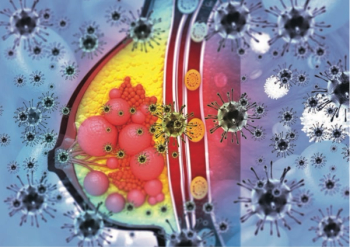
Oncology NEWS International
- Oncology NEWS International Vol 16 No 5
- Volume 16
- Issue 5
NCCN Panel Weighs in on Breast MRI, BRCA+ Patients
Issues surrounding magnetic resonance imaging (MRI) for breast cancer and what to do with the BRCA-positive patient
HOLLYWOOD, FloridaIssues surrounding magnetic resonance imaging (MRI) for breast cancer and what to do with the BRCA-positive patient were highlighted in an update on the breast cancer guidelines at the NCCN's 12th Annual Conference (see also article on page 1). The breast cancer panel felt it was important to stress that MRI for imaging the breast be performed and interpreted by an expert breast imaging team working together with a multidisciplinary treatment team, said Beryl McCormick, MD, acting chair of the Department of Radiology at Memorial Sloan-Kettering Cancer Center.
"Unfortunately, not all breast MRIs are created equal," Dr. McCormick said. "We see an increasing number of newly diagnosed breast cancer patients at Memorial Sloan-Kettering who come in with MRIs performed outside. In general, close to 90% of these are of no use to us and our radiologist will not even read them." Breast MRI requires a dedicated breast coil ("not just any MRI magnet will do," she said), and the breast imaging radiologist must be very familiar with optimal time sequences and other technical details.
The imaging center should have the ability to perform MRI-guided needle sampling or wire localization of MRI detected findings. "There's nothing more frustrating than telling someone she has a very suspicious mass on MRI and having no way to biopsy it," she said.
Dr. McCormick also stressed that the MRI examination is an adjunct to other breast imaging and should not be used in place of standard breast imaging with mammography and ultrasound. "There is no population-based screening information on the use of MRI. It is not for that," she said.
Clear indications for MRI include use in patients with biopsy-proven breast cancer whose dense breast tissue precludes assessment for extent of disease; and in patients with biopsy-proven adenocarcinoma presenting in the axilla but who have a normal clinical breast exam and negative mammogram. In this case, MRI is indicated to attempt to identify a primary cancer in the breast.
BRCA-Positive Patients
The panel also added one new contraindication for breast-conserving therapy with radiation. Women age 35 years or younger, or premenopausal women with a known BRCA1 or 2 mutation, have an increased risk of ipsilateral breast recurrence or contralateral breast cancer with breast-conserving therapy and should be considered for prophylactic bilateral mastectomy, Dr. McCormick said.
Also, for BRCA carriers, lumpectomy plus radiation is effective for the first index cancer, but these women continue to be at very high risk for ipsilateral new cancers in other quadrants, as well as contralateral cancers. "Contralateral prophylactic mastectomy [CPM] is much better for these women who have had breast cancerthere is a very significant difference between surveillance and surgery, and CPM is much better," she said.
In addition, oophorectomy before the age of 40 provides "a tremendous reduction in the odds risk of getting breast cancer" especially in BRCA1 women, she said.
The panel also added a footnote about hyperthermia for stage IV breast cancer. This was once thought to destroy breast tumors, but problems with the technology kept it from further use, Dr. McCormick said. "Hyperthermia is being looked at now, so we just put in a footnote that for the present, the technology suffers from a lack of standardization of dose and temperature goals, consensus on scheduling modalities, and lack of noninvasive monitoring," she said.
Articles in this issue
over 18 years ago
Escalating Drug Costs Could Provoke Consumer Backlashover 18 years ago
Large Study Casts Doubt on Value of CADover 18 years ago
Cetuximab Does Not Increase Mucositis in H&N Cancerover 18 years ago
2004 Update Shows Continued Lower Breast Ca Incidenceover 18 years ago
Reclast Single-Dose Infusion Approved for Paget's Diseaseover 18 years ago
Fragmin Approved for VTE in Cancer Ptsover 18 years ago
New Phase III Trial of Genasense in Advanced Melanoma Plannedover 18 years ago
Cervical Cancer Vaccines Show Sustained Protectionover 18 years ago
The 'New' Medicare: Passive Payer No More; PQRI Is First StepNewsletter
Stay up to date on recent advances in the multidisciplinary approach to cancer.

















































































